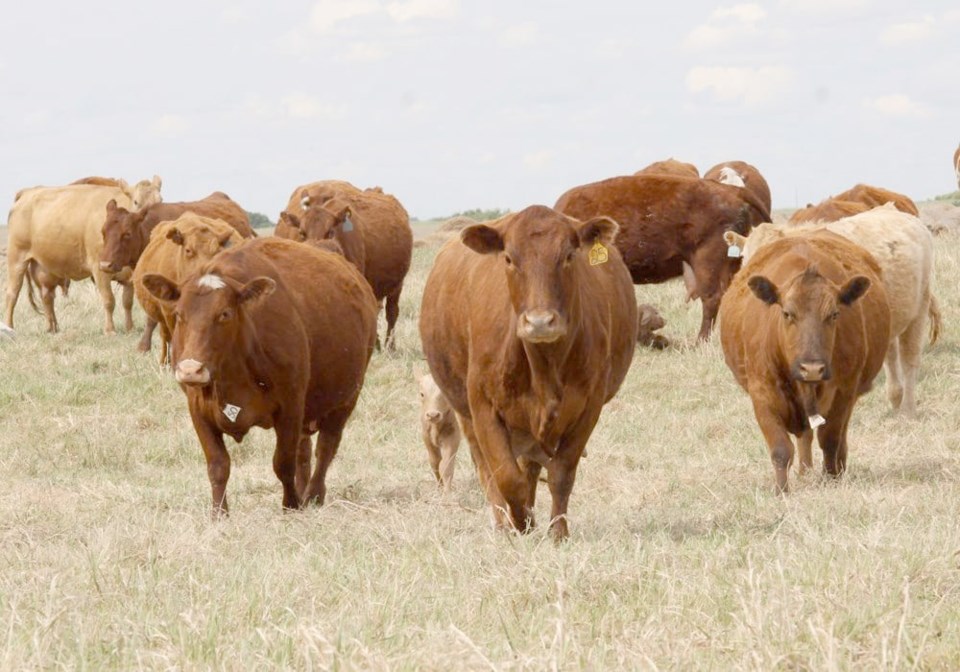REGINA — If you were one of the 35 young Saskatchewan cattle producers involved in a research project 10 years ago, Kathy Larson wants to talk to you again.
The research associate at the University of Saskatchewan is revisiting an earlier project with the help of Agriculture Development Fund money.
Saskatchewan agriculture minister David Marit announced $6.8 million in beef and forage research funding Jan. 23, which is 14 percent higher than the 2023 program.
Larson used ADF funding in 2014 to interview 35 ranchers under the age of 35. Then, she wanted to know how they were managing land and labour and capital challenges and opportunities.
“I thought it was an opportune time to come back 10 years later and follow up with those folks to see how things have changed,” she told reporters after the funding announcement at the Saskatchewan Beef Industry Conference.
“Have they done anything to take advantage of those opportunities, overcome those challenges, or are they still there, and also, just how are they doing production-wise,” Larson said.
She will also be asking if and how they use various business risk management programs.
She doesn’t yet know if they are all still in cattle production, but she said she wants to talk to them regardless.
“If they have exited, I do want to follow up with them and find out what led to that decision and what they’re doing now,” she said.
Forage researcher Bill Biligetu’s project on red clover and cicer milk vetch was also approved. It is co-funded by the Saskatchewan Forage Seed Development Commission.
He is receiving more than $665,000 to develop new red clover cultivars and improve cicer milkvetch.
“Red clover is an important seed crop for Saskatchewan agriculture, and cicer milk vetch is often used for late season grazing,” he said of the two legumes.
“There have been no breeding programs for the last 30 years in Western Canada, but red clover has been an important seed crop export to U.S. and European markets.”
He said these markets require strong varieties rather than common seed.
“My project is to collect germplasm from world gene banks and we already have done some pre-breeding work for four or five years so it’s not from zero,” said Biligetu.
He said the new varieties wouldn’t just be for forage seed growers because red clover is used in pasture mixes and is a valued cover crop in organic production.
One five-year project on cicer milkvetch is finishing this year, and he will continue to work on improving germination and establishment, developing a high-quality reference genome and analyzing genetic diversity for selection.
“Cicer milk vetch is an important legume for pastures and for late season grazing, but it has a trait — it’s very slow to establish, it requires maybe two years, three years to establish — so what we are focusing on is trying to develop a variety which establishes faster so it’s beneficial to producers,” he said.
The ADF selection committee comprising producers, academics and government representatives chose 30 projects for funding this year.
Marit said he is proud of their work because they keep producers’ needs in mind.
Larson said her funding requires a graduate student’s involvement so, with that help, she will begin interviews with the ranchers in the fall and winter of 2024-25, with results later in 2025.
She said in addition to talking to them about their personal experiences, she will calculate their cost of production and use that information to inform research and extension and policy development. Her project is co-funded by the Saskatchewan Cattlemen’s Association.
Other co-funders of other projects include the Saskatchewan Canola Development Commission, Saskatchewan Pulse Growers and the Saskatchewan Wheat Development Commission.
The federal government also participates.
The projects fall into the areas of beef, environment and water quality, forages, poultry, pulses and swine.
The U of S received the lion’s share at $4.5 million for 19 projects, while the Vaccine and Infectious Disease Organization is getting nearly $1.1 million for four projects.
Other recipients are Agriculture Canada, Olds College, Prairie Diagnostic Services, the Prairie Swine Centre and the University of Regina.
Details about these and past projects can be found on the Saskatchewan agriculture website.




